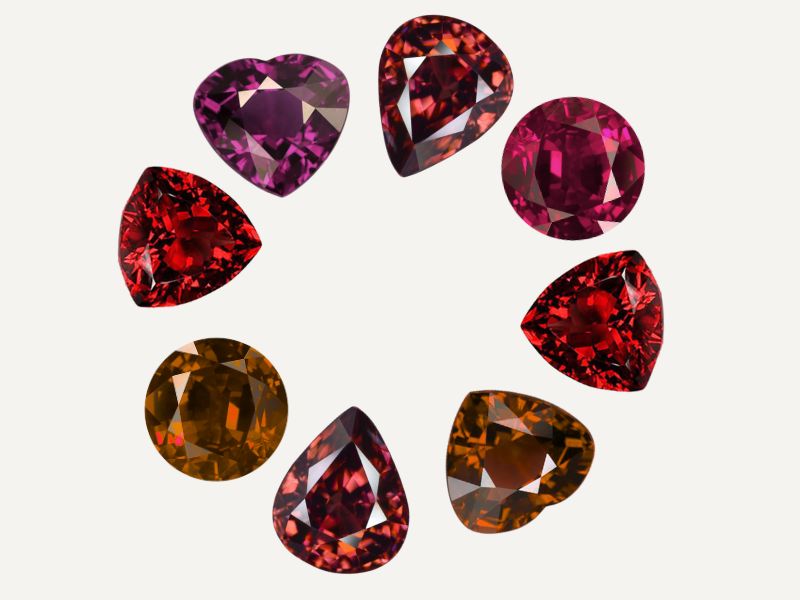
Garnet or Hyacinth: January’s True Birthstone?
Share
Today, it’s widely accepted that the birthstone for January is the red garnet (yes, specifically red and no other color). Garnet, particularly in its rich red hue, has long symbolized vitality, passion, and protection. These qualities align with the energy and determination associated with the start of a new year. Additionally, most of January falls under the zodiac sign of Capricorn, known for its perseverance, groundedness, and life force—qualities that resonate with garnet’s energy. As such, only red garnets are considered the true birthstone for January.
However, some medieval sources also recognize Hyacinth as a birthstone for January. Hyacinth is a rare variety of zircon with a deep red color. At first glance, one might think these stones were often confused due to their similar appearance. Yet this is not the case—both stones have been well-known for centuries and are referenced in biblical texts, which form the foundation of the birthstone tradition.
In the 7th-century treatise Etymologiae by Spanish Archbishop Isidore of Seville, Hyacinth is named as the stone for January. In Russia, both garnet and hyacinth were historically considered January birthstones.
In the Book of Revelation (21:19–20), Hyacinth is specifically mentioned as one of the twelve stones of the Foundation of the New Jerusalem:
“…the fifth, sardonyx; the sixth, carnelian; the seventh, chrysolite; the eighth, beryl; the ninth, topaz; the tenth, chrysoprase; the eleventh, hyacinth; the twelfth, amethyst.”
Garnet, on the other hand, might be one of the stones mentioned in Aaron’s breastplate in biblical texts, but its identification remains uncertain. The names of stones in ancient Hebrew texts do not always align clearly with modern mineral names.
Choosing Your Stone
When selecting your personal stone, it’s worth considering both garnet and hyacinth. Despite their similarities, each has unique properties:
• Hyacinth: Known for its ability to promote restful sleep and aid in healing, hyacinth is referenced in the medieval treatise Lapidario de Alfonso X el Sabio (13th century), which describes it as a stone that “brings peace to the body and soul” and protects against illness. During the Renaissance, hyacinth was revered for bringing tranquility and harmony.
• Garnet: A stone of strength and endurance, garnet was often used as a talisman in battle. It is described as a protector against the evil eye and negative energy, with mentions in ancient Indian and Arabic texts. During the Renaissance, garnet was also celebrated as a stone of love and passion.
The cost of garnet and hyacinth differs significantly. High-quality red garnets typically range from $70–$100 per carat, making them relatively affordable. Hyacinths, however, are far rarer, with prices ranging from $200 per carat for darker stones to $300–$500 per carat for bright, vibrant red stones.
Both stones carry rich histories and unique attributes, making either a meaningful choice for January-born individuals. Whether you choose garnet for its passionate energy or hyacinth for its calming influence, you’ll be embracing a gemstone steeped in tradition and symbolism.

Olga Bachurina,
Co-Founder of Venus in Libra,
Certified by GIA & Gübelin Academy



